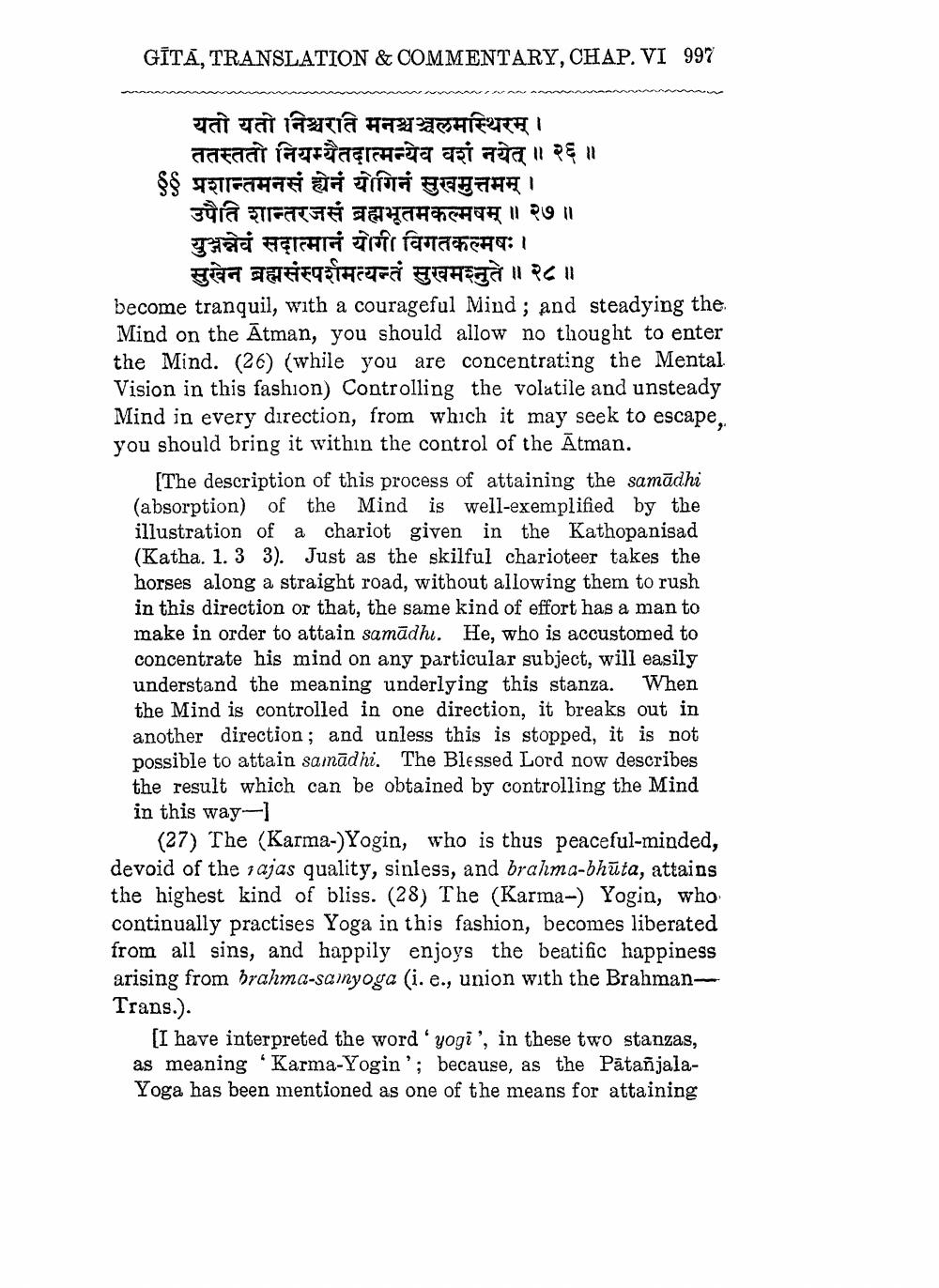________________
GĪTĀ, TRANSLATION & COMMENTARY, CHAP. VI 997
यतो यतो निश्चरति मनश्चञ्चलमस्थिरम् ।
ततस्ततो नियम्यैतदात्मन्येव वशं नयेत् ॥ २६ ॥ ६६ प्रशान्तमनसं ह्येनं योगिनं सुखमुत्तमम् ।
उपैति शान्तरजसं ब्रह्मभूतमकल्मषम् ॥ २७॥ युञ्जन्नेवं सदात्मानं योगी विगतकल्मषः।
सुखेन ब्रह्मसंस्पर्शमत्यन्तं सुखमश्नुते ॥२८॥ become tranquil, with a courageful Mind ; and steadying the Mind on the Ātman, you should allow no thought to enter the Mind. (26) (while you are concentrating the Mental Vision in this fashion) Controlling the volatile and unsteady Mind in every direction, from which it may seek to escape, you should bring it within the control of the Ātman.
The description of this process of attaining the samādhi (absorption) of the Mind is well-exemplified by the illustration of a chariot given in the Kathopanisad (Katha. 1. 3 3). Just as the skilful charioteer takes the horses along a straight road, without allowing them to rush in this direction or that, the same kind of effort has a man to make in order to attain samādhi. He, who is accustomed to concentrate his mind on any particular subject, will easily understand the meaning underlying this stanza. When the Mind is controlled in one direction, it breaks out in another direction; and unless this is stopped, it is not possible to attain sainādhi. The Blessed Lord now describes the result which can be obtained by controlling the Mind in this way--
(27) The (Karma-)Yogin, who is thus peaceful-minded, devoid of the rajas quality, sinless, and brahma-bhūta, attains the highest kind of bliss. (28) The (Karma-) Yogin, who continually practises Yoga in this fashion, becomes liberated from all sins, and happily enjoys the beatific happiness arising from brahma-samyoya (i. e., union with the Brahman Trans.).
(I have interpreted the word ' yogi', in these two stanzas, as meaning "Karma-Yogin'; because, as the PatañjalaYoga has been mentioned as one of the means for attaining




